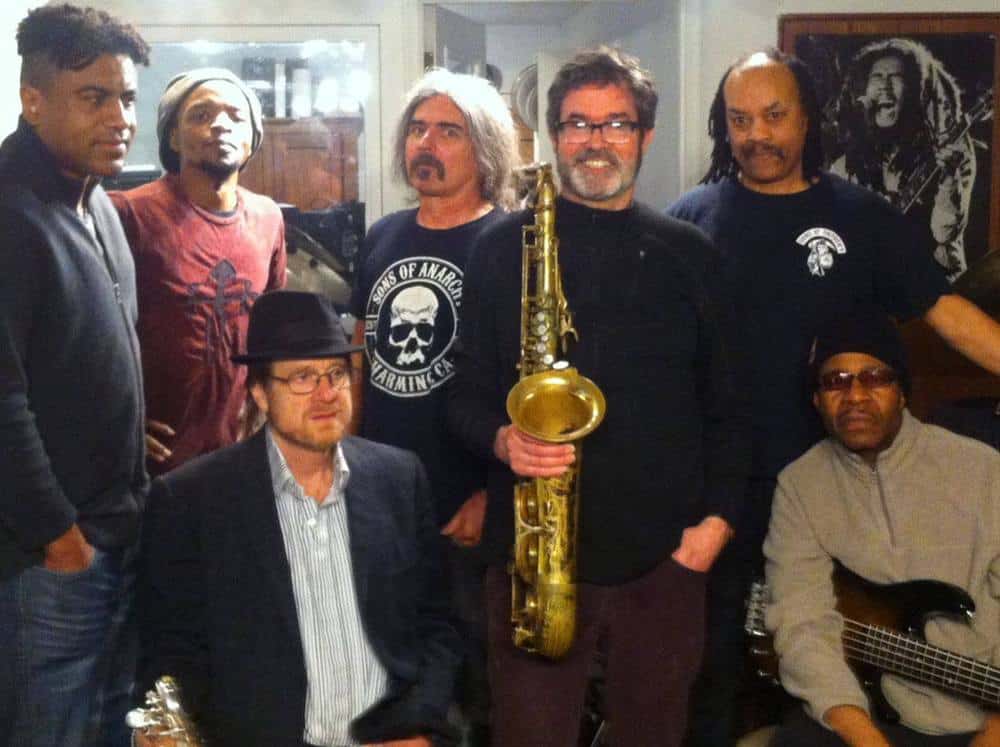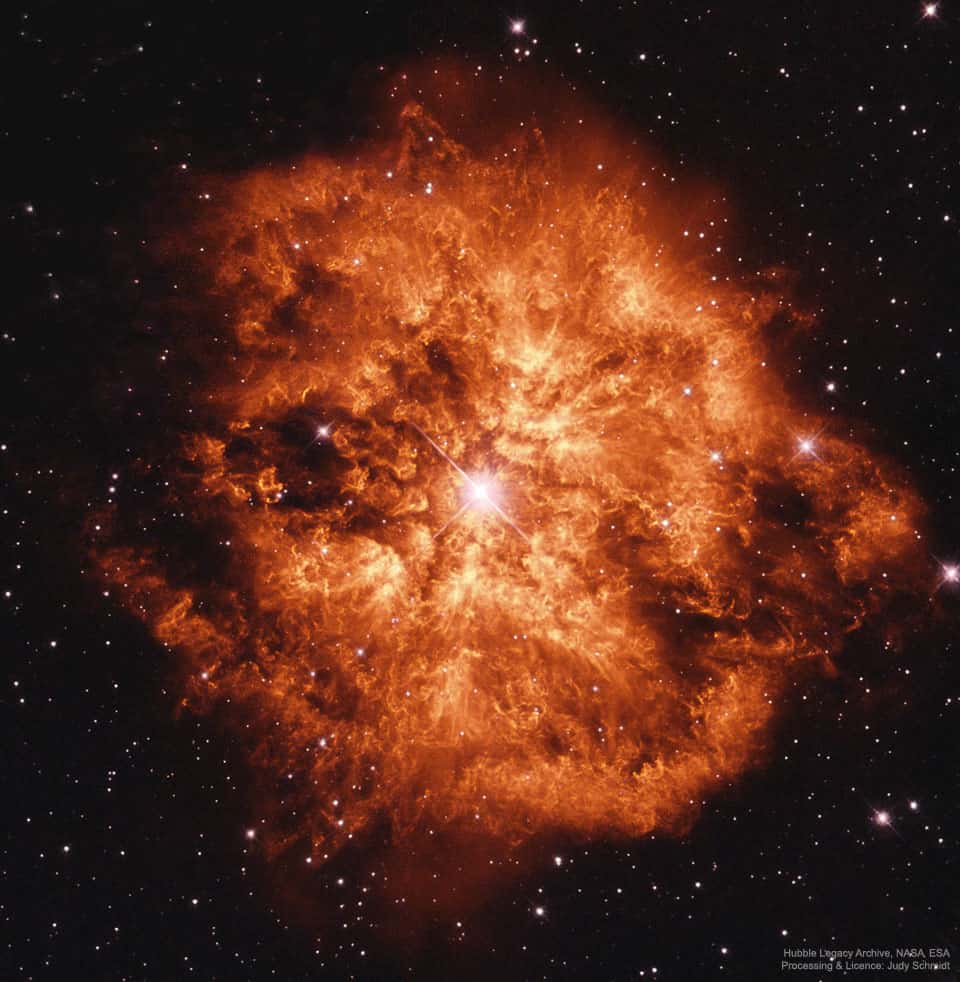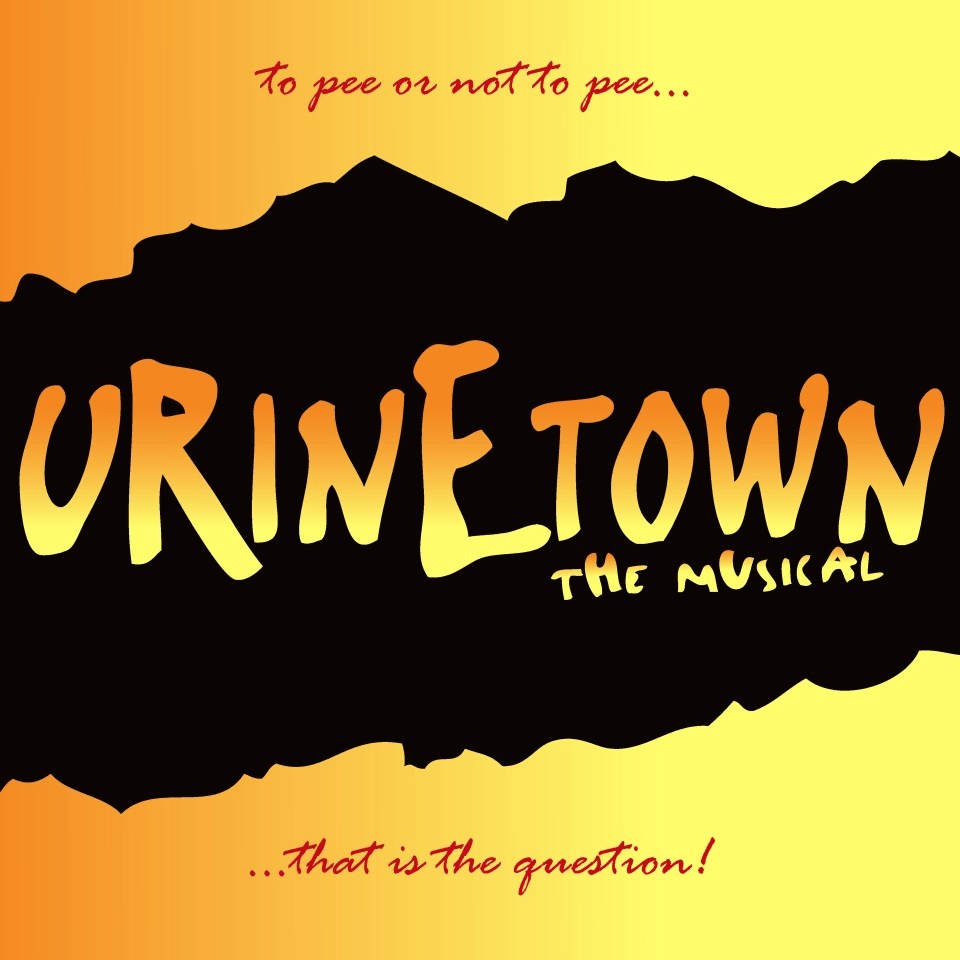Blog
The New Orleans Mardi Gras 8 piece group BEAU KOO JACKS will be performing the first set at 9pm for the upcoming Mayday 2020 Parade fundraiser to acquire the $10,000 City of Minneapolis permit. Tonight at Mortimers Bar https://www.mortimersbar.com With Jamie Carter, Todd Matheson, Paul Strickland, Larry McCabe, Jesse Mueller, Van Nixon and mick Bamboula.

Urinetown the musical by Theater 55 at the Illusion Theater 2pm matinee. The scene is a city in a parallel universe in the mid 1900’s in which the majority of the citizens’ dreary low-class existence is compounded by a water shortage, which has lead to the institution of pay-per-use public bathrooms and the jailing of unsanitary offenders. Orchestra includes Neal McIntosh, Jamie Carter, Chad Green, Paul Fontara, Matty Harris and mick laBriola.

Wolf-Rayet stars are so tumultuous and hot that they are slowly disintegrating right before our telescopes. Glowing gas globs each typically over 30 times more massive than the Earth are being expelled by violent stellar winds. Wolf-Rayet star WR 124, visible near the featured image center spanning six light years across, is thus creating the surrounding nebula known as M1-67. Details of why this star has been slowly blowing itself apart over the past 20,000 years remains a topic of research. WR 124 lies 15,000 light-years away towards the constellation of the Arrow (Sagitta). The fate of any given Wolf-Rayet star likely depends on how massive it is, but many are thought to end their lives with spectacular explosions such as supernovas or gamma-ray bursts.

William Edward Childs (born March 8, 1957) is a jazz pianist, arranger and conductor from Los Angeles, California.
When he was sixteen, he attended the Community School of the Performing Arts sponsored by the University of Southern California. He studied music theory with Marienne Uszler and piano with John Weisenfluh. From 1975–’79 he attended the University of Southern California and received a degree in composition under the tutelage of Robert Linn.
His sister is the playwright Kirsten Childs.
Childs was playing professionally as a teenager, and he made his recording debut in 1977 with the J. J. Johnson Quintet during a tour of Japan that is documented as the Yokohama Concert. He gained significant attention during his six-years (1978–84) playing with trumpeter Freddie Hubbard‘s group. While influenced early on in his playing by Herbie Hancock, Keith Emerson, and Chick Corea and in his composing by Paul Hindemith, Maurice Ravel, and Igor Stravinsky, Childs nevertheless had an original conception of his own from near the start, developing his own voice as both a pianist and a composer in jazz and classical music genres.
more...Gábor István Szabó (March 8, 1936 – February 26, 1982) was a Hungarian American guitarist whose style incorporated jazz, pop, rock, and Hungarian music.
Gábor Szabó was born in Budapest, Hungary. He began playing guitar at the age of 14. When he was 20, in the aftermath of the Hungarian revolution of 1956, he moved to California and he later attended Berklee College of Music in Boston between 1958 and 1960.
In 1961, Szabó became a member of quintet that was led by Chico Hamilton and included Charles Lloyd, playing what has been described as chamber jazz, with “a moderate avant-gardism”. Szabó was influenced by the rock music of the 1960s, particularly the use of feedback. In 1965 he was in a jazz pop group led by Gary McFarland, then worked again with Lloyd in an energetic quartet with Ron Carter and Tony Williams. The song “Gypsy Queen” from Szabó’s debut solo album Spellbinder became a hit for rock guitarist Carlos Santana. During the late 1960s, Szabó worked in a group with guitarist Jimmy Stewart. He started the label Skye Records with McFarland and Cal Tjader.
more...George Edward Coleman (born March 8, 1935) is an American jazz saxophonist known for his work with Miles Davis and Herbie Hancock in the 1960s. In 2015, he was named an NEA Jazz Master.
Coleman was born in Memphis, Tennessee. He was taught how to play the alto saxophone in his teens by his older brother Lucian Adams, inspired (like many jazz musicians of his generation) by Charlie Parker. Among his schoolmates were Harold Mabern, Booker Little, Frank Strozier, Hank Crawford, and Charles Lloyd.
After working with Ray Charles, Coleman started working with B.B. King in 1953, at which point he switched to tenor saxophone.[4] In 1956 Coleman moved to Chicago, along with Booker Little, where he worked with Gene Ammons and Johnny Griffin before joining Max Roach‘s quintet (1958–1959). Coleman recorded with organist Jimmy Smith on his album House Party (1957), along with Lee Morgan, Curtis Fuller, Kenny Burrell, and Donald Bailey. Moving to New York City with Max Roach in that year, he went on to play with Slide Hampton (1959–1962), Ron Carter, Jimmy Cobb, and Wild Bill Davis (1962), before joining Miles Davis’ quintet in 1963–1964.
His albums with Davis (and the rhythm section of Herbie Hancock (piano), Ron Carter (bass), and Tony Williams (drums)) are Seven Steps to Heaven(1963), A Rare Home Town Appearance (1963), Côte Blues (1963), In Europe (1963), My Funny Valentine, and Four & More, both live recordings of a concert in Lincoln Center for the Performing Arts in New York City in February 1964. Shortly after this concert, Coleman was replaced by Wayne Shorter. Nevertheless, Davis retained a high opinion of Coleman’s playing, stating that “George played everything almost perfectly…He was a hell of a musician.” Coleman played with Lionel Hampton (1965–1966), also in 1965 on Chet Baker‘s The Prestige Sessions, with Kirk Lightsey, Herman Wright, and Roy Brooks.[6] Clark Terry, Horace Silver, Elvin Jones (1968), Shirley Scott (1972), Cedar Walton (1975), Charles Mingus (1977–1978), Ahmad Jamal (1994, 2000), and many others.
more...John Smith Hurt (March 8, 1893 – November 2, 1966), better known as Mississippi John Hurt, was an American country blues singer and guitarist.
Raised in Avalon, Mississippi, Hurt taught himself to play the guitar around the age of nine. He worked as a sharecropper and began playing at dances and parties, singing to a melodious fingerpicked accompaniment. His first recordings, made for Okeh Records in 1928, were commercial failures, and he continued to work as a farmer.
Dick Spottswood and Tom Hoskins, a blues enthusiast, located Hurt in 1963 and persuaded him to move to Washington, D.C.He was recorded by the Library of Congress in 1964. This helped further the American folk music revival, which led to the rediscovery of many other bluesmen of Hurt’s era. Hurt performed on the university and coffeehouse concert circuit with other Delta blues musicians who were brought out of retirement. He also recorded several albums for Vanguard Records.
Hurt returned to Mississippi, where he died, in Grenada, a year later.
Material recorded by him has been re-released by many record labels. His songs have been recorded by Bob Dylan, Dave Van Ronk, Jerry Garcia, Beck, Doc Watson, John McCutcheon, Taj Mahal, Bruce Cockburn, David Johansen, Bill Morrissey, Gillian Welch, Josh Ritter, Chris Smither, Guthrie Thomas, Parsonsfield, and Rory Block.
Hurt was born in Teoc, Carroll County, Mississippi, and raised in Avalon, Mississippi. He taught himself to play guitar at the age of nine, stealthily playing the guitar of a friend of his mother’s, who often stayed at the Hurt home while courting a woman who lived nearby. As a youth he played old-time music for friends and at dances. He worked as a farmhand and sharecropper into the 1920s.
more...Today at the Illusion Theater 2pm & 730pm performances by Theater 55. Orchestra includes Neal McIntosh, Jamie Carter, Chad Green, Paul Fontara, Matty Harris and mick laBriola.

Messier 104, a lenticular galaxy located 28 million light-years away in the constellation Virgo, now has a new chapter in its story — an extended halo of metal-rich stars with barely a sign of the expected metal-poor stars that have been observed in the halos of other galaxies.
“Also known as the Sombrero galaxy, Messier 104 has always been a bit of a weird galaxy, which is what makes it so interesting,” said Dr. Paul Goudfrooij, an astronomer with the Space Telescope Science Institute and a member of the team who observed the galaxy using the NASA/ESA Hubble Space Telescope.
“Hubble’s metallicity measurements (i.e., the abundance of heavy elements in the stars) are another indication that Messier 104 has a lot to teach us about galaxy assembly and evolution,” he added.
“The observations of the Sombrero’s halo are turning our generally accepted understanding of galaxy makeup and metallicity on its head,” said Dr. Roger Cohen, also from the Space Telescope Science Institute.
The astronomers, puzzling over the new data from Hubble, turned to sophisticated computer models to suggest explanations for the perplexing inversion of conventional galactic theory.

more...
Dan Papirany is an Israeli Jazz pianist, composer who is based in Australia. While studying jazz piano at Massey University in Wellington Dan formed his first trio and played in local venues and mainly at “Bar Bodega”. In 2002 Dan formed his Auckland trio, The trio recorded their first album titled Session one on March 2, 2004, this album comprises standard tunes and was nominated for New Zealand music awards and was released by Ode Records.
The second album titled Session Two – Originals, recorded on April 27, 2004 comprises original tunes only. The third, fourth and fifth albums are live albums recorded with Frank Gibson Jr. on drums and Pete McGregor on bass at their residency venue The “MLC Café & Bar”.
Dan recorded his 6th album titled “2011” in 2011, and his 7th album titled “2014” which includes the original tune “Bargara”. Dan’s next album was titled “2015” and includes one original tune titled “E♭ Major Waltz”. Dan recorded his debut solo album in 2017 in a studio in Israel, and the album is titled 2018. Dan’s latest album titled 2018 is a trio album recorded in a studio in QLD Australia featuring a live session which has a raw sound employing minimal separation and mixing process.
more...Giorgos Katsaros (Greek: Γιώργος Κατσαρός) (born on 7 March 1934 in Corfu) is a famous Greek musician and songwriter. He plays the alto saxophone. He has made a variety of recordings, collaborating amongst others with Greek musical composers and singers, such as Yannis Theodoridis, Nana Mouskouri, and Mimis Plessas.
In 1972 he wrote the music for Alekos Sakellarios‘ I Komissa tis Kerkyras (Greek: Η κόμησσα της Κέρκυρας The Countess of Corfu). He is currently the art director of the Municipal Symphonic Orchestra of Athens.
more...Louis Albert Cottrell Jr. (March 7, 1911, New Orleans – March 21, 1978, New Orleans) was a Louisiana Creole jazz clarinetist and tenor saxophonist. He was the son of the influential drummer Louis Cottrell, Sr., and grandfather of New Orleans jazz drummer Louis Cottrell. As leader of the Heritage Hall Jazz Band, he performed at the famous Carnegie Hall in 1974.
Louis Cottrell was born into an upper-class Creole musical family. His father, Louis “Old Man” Cottrell, Sr., was a famed drummer, and cornetist Manny Perez was his godfather. The young Cottrell grew up around such great musicians as Barney Bigard, John Robichaux, and A.J. Piron. Cottrell studied clarinet under Lorenzo Tio Jr. and Bigard. He began his career in the 1920s with the Golden Rule Orchestra, and then in 1925 played with Paul “Polo” Barnes. Later in the 1920s he worked with Chris Kelly and Kid Rena, then in 1929 found work on the riverboat SS Island Queen with Lawrence Marrero‘s Young Tuxedo Brass Band and Sidney Desvigne.
more...McCoy Tyner, a pianist whose deep resonance, hammering attack and sublime harmonic invention made him a game-changing catalyst in jazz and beyond, died Friday, March 6, at his home in New Jersey. His death was confirmed by his manager. No cause of death was given. He was 81.
Tyner was the last surviving member of the John Coltrane Quartet, among the most momentous groups in jazz history. Few musicians have ever exerted as much influence as a sideman. His crucial role in the group’s articulation of modal harmony, from the early 1960s on, will always stand as a defining achievement: The ringing intervals in his left hand, often perfect fourths or fifths, became the cornerstone of a style that endures today.
But Tyner was always a more multidimensional musician than the sum of his mannerisms would seem to suggest. And he had a long, consequential post-Coltrane career as a composer and bandleader. Among his dozens of albums are a handful regarded as classics, like Reaching Fourth, The Real McCoy and Atlantis. A number of his compositions, including “Passion Dance” and “Peresina,” have entered the common repertory.
more...Performing tonight Friday 3-6-20 by Theater 55 at Illusion Theater. 730pm show. “In an attempt to regulate water consumption, Urinetown has outlawed the use of private toilets. The citizenry must use public, pay-per-use amenities owned and operated by Urine Good Company, a malevolent corporation run by the corrupt Caldwell B. Cladwell.” Music by Music by Music by Neal McIntosh, Jamie Carter, Chad Green, Paul Fontara and mick laBriola.

more...
The barred spiral galaxy NGC 3887, seen here as viewed by the Wide Field Camera 3 aboard the NASA/ESA Hubble Space Telescope, lies over 60 million light-years away from us in the southern constellation of Crater (The Cup); it was discovered on December 31, 1785, by the German/British astronomer William Herschel.
Its orientation to us, while not exactly face-on, allows us to see NGC 3887’s spiral arms and central bulge in detail, making it an ideal target for studying a spiral galaxy’s winding arms and the stars within them.
The very existence of spiral arms was for a long time a problem for astronomers. The arms emanate from a spinning core and should therefore become wound up ever more tightly, causing them to eventually disappear after a (cosmologically) short amount of time. It was only in the 1960s that astronomers came up with the solution to this winding problem; rather than behaving like rigid structures, spiral arms are in fact areas of greater density in a galaxy’s disc, with dynamics similar to those of a traffic jam. The density of cars moving through a traffic jam increases at the center of the jam, where they move more slowly. Spiral arms function in a similar way; as gas and dust move through the density waves they become compressed and linger, before moving out of them again.

More Posts
- Earl Hooker Day
- Gene Krupa Day
- World Music with Rocky Dawuni
- Daily Roots with the Maytals
- Echoes of Freedom by Sitting Bull
- The Cosmos with UGC 6945
- Allen Toussaint Day
- Kenny Wheeler Day
- Grady Tate Day
- World Music with Alboka
- Daily Roots with Joe White & Chuck
- Echos of Freedom by Chief Joseph
- The Cosmos with NGC 3310
- Joe Pass Day
- Danny Barker Day
- World Music with Vardan Hovanissian & Emre Gültekin
- Daily Roots with the Four Aces
- The Cosmos with Centaurus A
- George Duke Day
- Jay McShann Day
